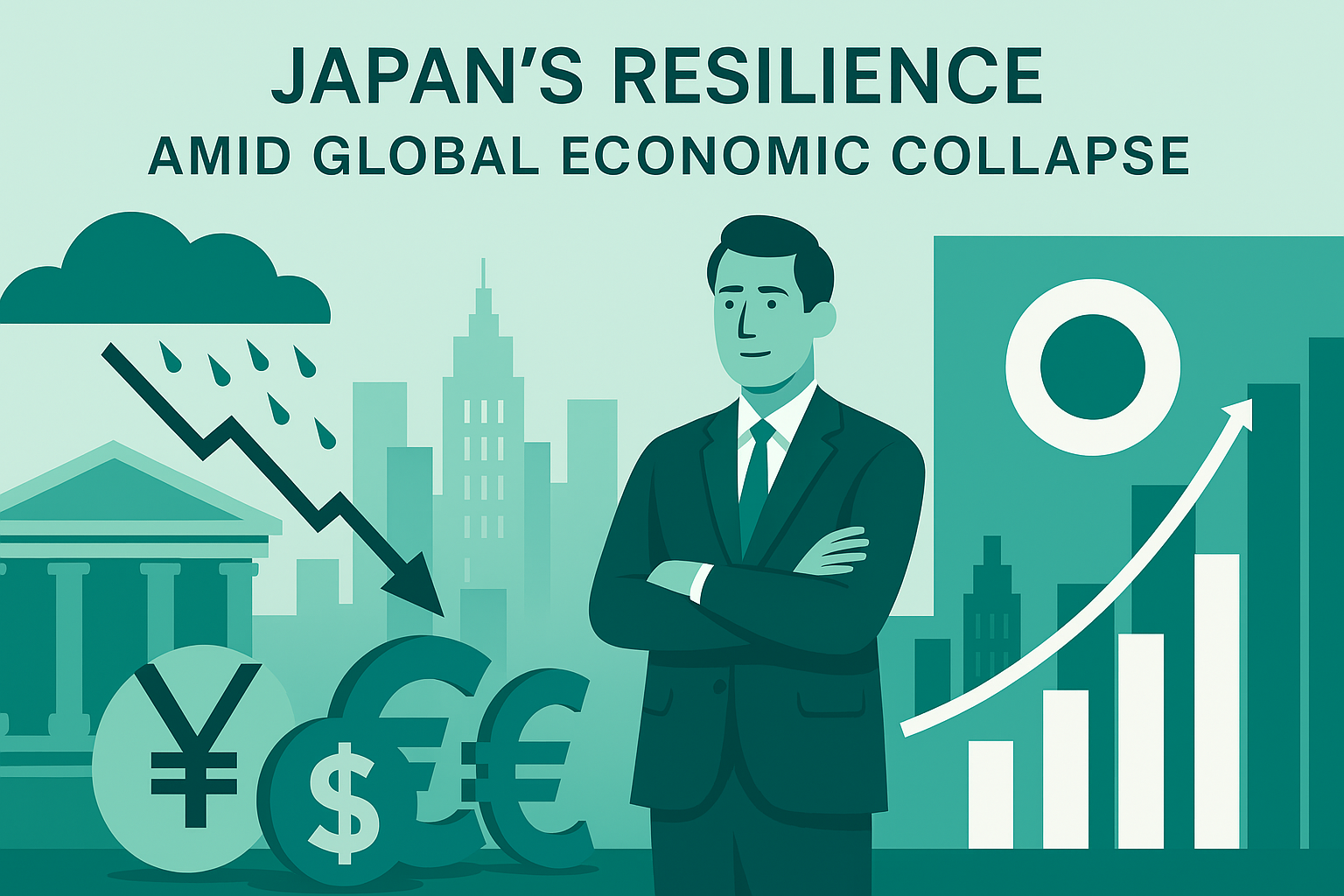—Lessons from 1930 and Policy Imperatives for 2025—
By: Global Economist
🧭 Introduction
The 1929 Great Depression, triggered by a Wall Street crash, cascaded into a global economic meltdown that led to mass unemployment, protectionist policies, and eventually global conflict. Nearly a century later, the global economy is again facing structural vulnerabilities—financial overheating, rising inequality, and geopolitical fragmentation. While institutions are more robust today, systemic complacency remains a risk. This report analyzes the likelihood of a modern-day depression and outlines Japan’s strategic policy options to mitigate such a scenario.
📉 How Real Is the Risk of Another Great Depression?
Parallels Between 1929 and 2025
| Category | 1929 Context | Modern Similarities (2025) |
|---|---|---|
| Financial Bubble | Overleveraged equities and credit surge | AI stocks, crypto, real estate speculation |
| Wealth Inequality | Concentration of wealth in top 1% | Top 10% hold over 70% of global assets |
| Protectionism | Smoot-Hawley Tariff Act (1930) | Trump-era tariffs, decoupling from China |
| Policy Inflexibility | Gold standard limited stimulus | Though flexible today, monetary cooperation is weakening |
Modern Risk Triggers
- U.S. debt ceiling crisis and sovereign credit downgrades
- Chinese economic slowdown and local government debt risk
- Middle East or Taiwan Strait conflict escalating commodity inflation
- Global tightening of monetary policy sparking credit contraction
▶ If these elements converge, a 1930-style depression becomes a plausible systemic risk.
🏛 Japan’s Structural Vulnerabilities
- Demographic Decline: Rapid aging, shrinking consumer base, rising medical/pension costs
- Economic Fragility: Export dependence, SME-heavy supply chains
- Fiscal Constraints: Debt-to-GDP ratio exceeding 260%, limiting room for countercyclical stimulus
- Budget Trade-offs: Defense spending doubling, pressuring social security and redistribution
▶ In the face of external shocks, Japan’s room for maneuver is limited by structural rigidity.
🛡 Strategic Policy Recommendations for Japan
A. Macroeconomic Resilience: Fiscal Balance & Supply Chain Security
| Policy Area | Priority | Examples |
|---|---|---|
| Currency & Trade | Yen stability and food/energy security | Expand agricultural reserves, FX coordination |
| Fiscal Reform | Balance defense and welfare | Reallocate spending, control pension costs |
| Trade Alliances | Regional diversification | Strengthen CPTPP, India-ASEAN ties |
B. Social Sustainability: Rebuilding Purchasing Power and Trust
| Area | Policy Tool | Intended Effect |
|---|---|---|
| Wages | Subsidies for SME wage hikes | Stimulate consumption, stabilize middle class |
| Redistribution | Targeted tax reform | Reduce inequality, support working population |
| Consumption Boost | Temporary consumption tax cut | Break deflationary mindset, encourage spending |
C. Industrial Strategy: Long-Term Resilience and Innovation
| Sector | Policy Proposal | Strategic Goal |
|---|---|---|
| Manufacturing | Domestic relocation incentives | Strengthen regional economies, reduce imports |
| Energy | National green energy strategy | Decarbonization and inflation protection |
| Startups/Tech | VC tax reform and IPO pipeline | Foster innovation and job creation |
Conclusion & Strategic Imperatives
The Great Depression of 1929 was not just a financial collapse—it was a policy failure. In 2025, the risk lies not in institutional weakness but in strategic inertia. Japan must act before macroeconomic cracks become systemic fissures.
🔑 Three Critical Priorities for Japan:
- Stimulate Domestic Demand + Income Redistribution
- Rebuild Trade Alliances and Multilateralism
- Design Policy Frameworks for Resilience Against External Shocks
📚 References (as of 2025) – URLs
🔹 IMF World Economic Outlook 2025
https://www.jil.go.jp/english/jli/documents/2025/051-03.pdf
🔹 OECD Economic Outlook No. 117 (Volume 2025 Issue 1)
🔹 Japan Ministry of Finance, FY2025 Budget White Paper
https://www.mof.go.jp/english/policy/budget/budget/fy2025/01.pdf
🔹 Cabinet Office, Basic Policy 2025 (Honebuto no Hoshin)



